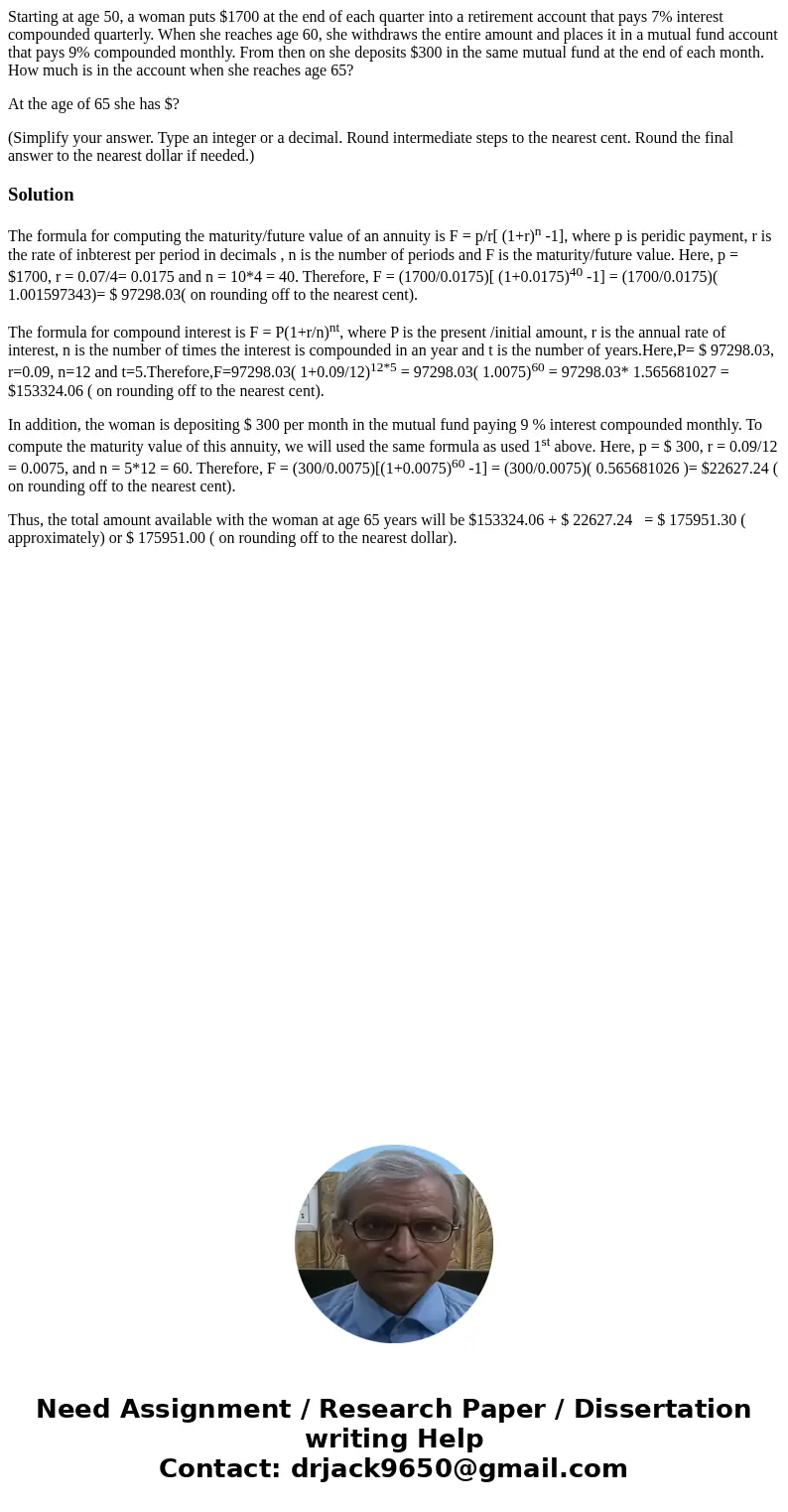Starting at age 50 a woman puts 1700 at the end of each quar
Starting at age 50, a woman puts $1700 at the end of each quarter into a retirement account that pays 7% interest compounded quarterly. When she reaches age 60, she withdraws the entire amount and places it in a mutual fund account that pays 9% compounded monthly. From then on she deposits $300 in the same mutual fund at the end of each month. How much is in the account when she reaches age 65?
At the age of 65 she has $?
(Simplify your answer. Type an integer or a decimal. Round intermediate steps to the nearest cent. Round the final answer to the nearest dollar if needed.)
Solution
The formula for computing the maturity/future value of an annuity is F = p/r[ (1+r)n -1], where p is peridic payment, r is the rate of inbterest per period in decimals , n is the number of periods and F is the maturity/future value. Here, p = $1700, r = 0.07/4= 0.0175 and n = 10*4 = 40. Therefore, F = (1700/0.0175)[ (1+0.0175)40 -1] = (1700/0.0175)( 1.001597343)= $ 97298.03( on rounding off to the nearest cent).
The formula for compound interest is F = P(1+r/n)nt, where P is the present /initial amount, r is the annual rate of interest, n is the number of times the interest is compounded in an year and t is the number of years.Here,P= $ 97298.03, r=0.09, n=12 and t=5.Therefore,F=97298.03( 1+0.09/12)12*5 = 97298.03( 1.0075)60 = 97298.03* 1.565681027 = $153324.06 ( on rounding off to the nearest cent).
In addition, the woman is depositing $ 300 per month in the mutual fund paying 9 % interest compounded monthly. To compute the maturity value of this annuity, we will used the same formula as used 1st above. Here, p = $ 300, r = 0.09/12 = 0.0075, and n = 5*12 = 60. Therefore, F = (300/0.0075)[(1+0.0075)60 -1] = (300/0.0075)( 0.565681026 )= $22627.24 ( on rounding off to the nearest cent).
Thus, the total amount available with the woman at age 65 years will be $153324.06 + $ 22627.24 = $ 175951.30 ( approximately) or $ 175951.00 ( on rounding off to the nearest dollar).

 Homework Sourse
Homework Sourse